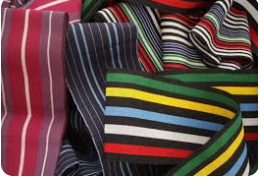Nigerian life, culture and mannerisms have been defiantly taken to the global stage – right into the royal court of Britain. I dare mention that the art of Aso-Oke has contributed to this boldness. That is because the exceptional traditional cloth called ‘Aso-Oke’ is one of the most beautiful clothing materials that has ever emerged from Africa.

The beautiful and sometimes intricate designs and colors of the Aso-Oke, coupled with its durability, is stunning. Call it royal fabric and you will not be far from the truth.
Nigerians are unbeatable when it comes to dressing in traditional attire, even at international gatherings.
Oh yes. Nigerians are courageous and creative people, and fervent ambassadors of their culture. They have taken Aso-Oke and other cloth materials native to Nigeria along with them, beyond the African continent. Their zeal to stand out as individuals and as representatives of this great nation can hardly be hidden wherever they go.
The History and Evolution of Aso-Oke
‘Aso-Oke’ is a shortened form of the term ‘Aso Ilu-Oke‘ (literally translating to cloth from the far/up country). It is otherwise called ‘Aso Ofi‘. This peculiar cloth material emerged from the Yoruba ethnic group of southwest Nigeria in the 15th Century. History sources indicate the arrival of Islam in Yorubaland around that same period. This may have strongly influenced the emergence of the art of Aso-Oke weaving, as Islam requires head covering as a rule.
The art of Aso-Oke weaving began in Oyo and Iseyin towns. From there, the craft gradually spread to neighboring Yoruba towns. It went even as far as to towns belonging to Idoma, Igalla, Tiv, and Ebira ethnic groups. What started out as simple striped patterns of two or three colors at most, has evolved into a rainbow of colors and exciting designs today.
The Art of Aso-Oke: How It is Made
Aso-Oke material was traditionally woven out of cotton thread, using a native form of the weaving loom. Locally sourced materials such as goat hairs, bark, raffia and local silk were also used.
The native Yoruba weaving loom is of two types. Firstly, there is the broad loom (or upright single heddle loom) used by women. It is a fixed upright frame used to stretch the vertical threads (warp) while passing the horizontal threads (weft) through them. The width of this type of Aso-Oke is typically between 30 cm and 90 cm. Once completed, about three lengths of the cloth are sewn edge to edge to form a wrapper for women. This type of Aso-Oke is also called ‘Kijipa’.
The other type of loom is the double heddle loom often used by men. It stretches the warp threads horizontally a few meters long, parallel to the ground. The final material is about 14 cm to 15 cm wide. Its major advantage is that it allows a wider variety of coloured threads or yarns to be used to form different patterns. It also uses more weaving accessories than the vertical loom. The other accessories used for the intricate art of Aso-Oke weaving include bobbins, starch, creel, shuttle, silk threads and winding instruments.
The 3 Major Types of Aso-Oke
Traditional Aso-Oke has three major types or designs which are Sányán, Arari and Ẹtu.
- Sányán has a pale brown color. The material is woven from beige silk threads obtained from the Anaphe moth.
- Arari has a deep red color. Its material is made out of magenta waste silk.
- Ẹtu is either indigo or deep blue with light blue pinstripes.
However, modern weaving materials, colors and tools have allowed for more beautiful Aso-Oke designs to be created beyond the three types above.
Uses of Aso-Oke
Aso-oke Is normally sewn for men in the form of trousers (‘Sokoto’), full men’s gown or robe (‘Agbada’), a loose top (‘Buba’) and a hat (‘Fila’). For women, it is sewn into a wrapper (‘Iro’), head tie (‘Gele’), shawl or scarf (‘Iborun’) and a loose blouse (‘Buba’). In modern times, women have chosen to replace the blouse (and oftentimes the wrapper) with lightweight lace material for better comfort. Aso-Oke used to be a heavy cloth until modern production methods helped to make it less heavy.
It is the official ceremonial wear of the Yorubas. As such, one would find every Yoruba indigene of worthy mention donned in complete Aso-Oke, or mixed with other materials (particularly lace) during special events. Aso-Oke is usually worn at weddings, traditional and religious festivals, burials, and various kinds of ceremonies. It is also commonly worn to church by Yoruba Christian worshippers.
Not only that, but it is also common for family members to wear the same design of Aso-Oke for an event, often called ‘Aso Ebi‘ (family cloth).
Other tribes such as the Igbo (especially the women), have also taken a liking to the appealing Aso-Oke. One would sometimes see women of Igbo origin wear modern Aso-Oke as part of their attire.